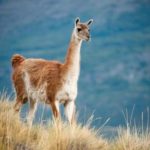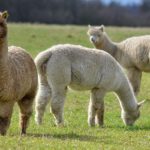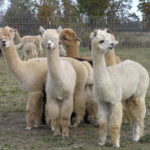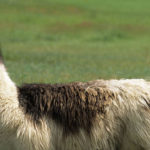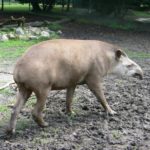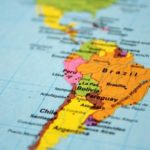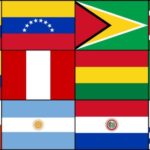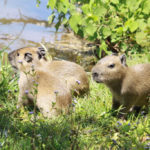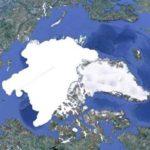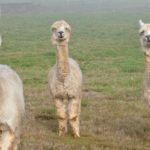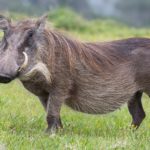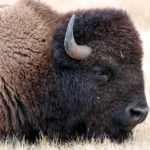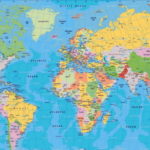Vicuna – Description
 Vicuna or in Latin Lama vicugna is the smallest animal of the llama genus, the indigenous inhabitants of the South American continent. These camelids are the oldest in South America. The history of their origin goes back to the era of the ice age.
Vicuna or in Latin Lama vicugna is the smallest animal of the llama genus, the indigenous inhabitants of the South American continent. These camelids are the oldest in South America. The history of their origin goes back to the era of the ice age.
Scientists also argue that during this colossal time, they practically did not change, and it is the vicuna who are the progenitors of llama and alpaca.
The body length of the vicuna is on average 150 cm, and the height at the withers is about a meter. The weight of the animal varies from 40 to 50 kg. The vicuna has a short head and long ears. A long, muscular neck allows you to see enemies at a long distance. The vicuna’s back is light brown and the coat on her stomach is almost white.
A characteristic feature of the vicuna that distinguishes it from other ungulate mammals is its teeth. They are very sharp and have the shape of incisors. Vicunas cut the grass with their teeth, and did not tear it out, as other ungulates do. In addition, the lower incisors are constantly growing, like in rodents, which is also not characteristic of the closest relatives of the vicuna.
Many centuries ago, the Incas, the ancestors of the present Quechuans and Aymaras, domesticated llamas and alpacas. Llamas became pack animals, and from alpaca they received wool and meat. Some tribes did the same with guanacos, which eventually also became domesticated. But the vicuna were both wild and wild.
But the vicuña revealed the special properties of the coat, it is soft and so warm that it cannot be compared with the fur of any other animal on earth. In terms of thermal conductivity, it is comparable only to eider down.
Ancient Incas knew about this and appreciated the vicuna. But since very little wool was obtained, the Incas emperors and priests introduced the privilege of using such fur as part of the Inti cult – worship of the sun god. The vicuna wool was called the “rune of the gods” or the “golden rune” and decided that it was only for the gods and emperors and their family members. They, under pain of the death penalty, forbade hunting and killing of these animals and declared them sacred. And only once every two years the so-called royal chaku were announced. For this, a large number of people gathered, vicunas were herded and placed in corrals, where wool was cut from them. Then they were released.
The wool was taken down to the temples of the Sun or to special warehouses. There they disassembled and cleaned this wool. Coarse wool was handed out to ordinary people, and threads were woven and woven fabrics from fine fine wool. The priestesses living in the “Temples of the Sun”, from the girls with the pure blood of the Incas, who were called the “wives of the Sun”, sewed clothes for the emperor’s family from this fabric. Commoners and even knowing no royal blood could not wear clothes from vicuna cloth on pain of death.
After the Spaniards arrived in South America, everything was broken. The Spanish conquistadors established their order. Learning about the value of vicuna fur, they began to exterminate them en masse and at the beginning of the XIX century the vicuna were on the verge of extinction. After the end of the liberation war for the independence of the Spanish colonies in America (1810 – 1826), the leaders of South American countries that came to power began to restore the economy of their states. So the first president of Peru, Simon Bolivar, with the consent of the founding congress, signed a law according to which the hunt for vicuna was recognized as a crime and prosecuted by law. Moreover, even on the coat of arms of Peru was depicted vicuna. And today, on the modern coat of arms of Peru in the upper part of the left, the image of the vicuna is also flaunted, which symbolizes the wealth of the animal world of this country.
At the beginning of the 60s of the last century, several nature reserves and national parks were legalized in the territories of these states, the most famous of which are considered as Lauca, Sahama and Las Vikunyas. The main part of the vicuna was placed in the reserve of Las Vicunas with an area of 4 856 hectares; during the resettlement, only five thousand vicuna were counted. However, the destruction of the vicuna continued, this could not stop the poachers who worked for the “black market”. The stock of these rare animals fell, and they were listed in the Red Book. In 1970, a law was passed in the United States prohibiting the sale of any Vicuna goods.
And in 1975, under the auspices of the International Union for Conservation of Nature, the International Government Agreement “Convention on the International Trade in Endangered Species of Wild Fauna and Flora” was signed and only after that the number of vicuna began to increase noticeably. Since 1994, CITES has excluded vicunias from the catalog of animals whose existence is at risk. However, the Vicuna is still listed in the International Red Book. Currently, in Peru, in Bolivia, in Ecuador, in Argentina and Chile, the number of vicunas totals no more than 200 thousand individuals.
